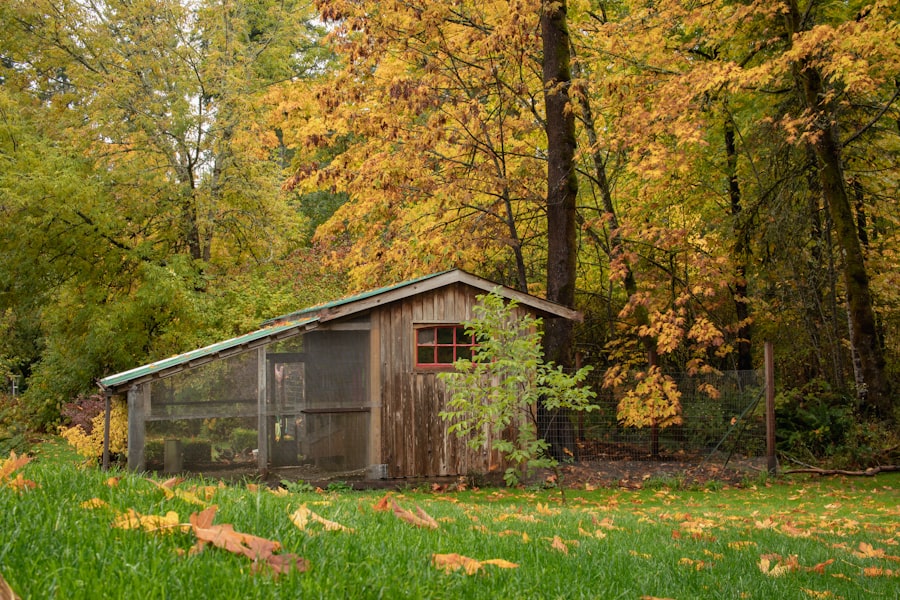Understanding canine behavior is essential for preventing aggressive incidents. Dogs may exhibit aggression due to various factors, including fear, territorial instincts, pain, or illness. Recognizing signs of aggression, such as growling, baring teeth, or stiff body posture, is crucial for identifying potential issues.
By understanding the underlying causes of aggressive behavior, owners can more effectively address and manage these tendencies. It is important to note that certain dog breeds may have a genetic predisposition towards aggression. While this does not guarantee that all individuals of a particular breed will be aggressive, it does emphasize the need for additional care in training and socialization for these breeds.
Familiarity with breed-specific traits and tendencies can help owners anticipate and address potential aggressive behaviors before they become problematic. By comprehending canine behavior patterns and being aware of breed-specific characteristics, owners can implement proactive measures to prevent aggression and create a safe environment for both their pets and those around them. This knowledge enables more effective training, socialization, and management strategies, ultimately leading to a harmonious relationship between dogs and their human companions.
Table of Contents
- 1 Securing Your Property
- 2 Training and Socialization
- 3 Supervision and Monitoring
- 4 Using Deterrents
- 5 Seeking Professional Help
- 6 Communicating with Your Neighbor
- 7 FAQs
- 7.1 What are some effective ways to keep a dog from killing neighbor’s chickens?
- 7.2 Is it possible to train a dog to not kill chickens?
- 7.3 What are some signs that a dog may be prone to killing chickens?
- 7.4 Are there any products or devices that can help prevent a dog from killing chickens?
- 7.5 What should I do if my dog has killed a neighbor’s chickens?
Key Takeaways
- Understanding the behavior of your dog is crucial in preventing any potential issues.
- Securing your property with proper fencing and gates can help prevent your dog from escaping or causing harm to others.
- Training and socialization are essential for ensuring your dog behaves well around people and other animals.
- Supervision and monitoring your dog’s behavior can help prevent any aggressive or destructive actions.
- Using deterrents such as muzzles or training collars can help control your dog’s behavior in certain situations.
- Seeking professional help from a dog trainer or behaviorist can provide valuable guidance in managing your dog’s behavior.
- Communicating with your neighbor about your dog’s behavior can help prevent any conflicts and ensure a safe environment for everyone.
Securing Your Property
Physical Barriers: Fences and Leashes
A secure fence not only prevents your dog from escaping and potentially causing harm to others, but it also keeps other animals or individuals from entering your property and provoking your dog. Additionally, using a leash when walking your dog in public areas can help you maintain control and prevent any potential confrontations with other dogs or people.
Removing Triggers for Aggressive Behavior
In addition to physical barriers, it’s essential to secure your property by removing any potential triggers for aggressive behavior. This may include keeping food, toys, or other resources out of reach from other animals or individuals. By removing these triggers, you can help reduce the likelihood of your dog feeling threatened and displaying aggressive behavior.
Creating a Safe Environment
Securing your property not only protects others from potential harm but also creates a safe and controlled environment for your dog to thrive. By taking these measures, you can help prevent aggressive behavior and ensure a peaceful coexistence between your dog and others.

Training and socialization are key components in preventing and managing aggressive behavior in dogs. Proper training helps establish boundaries and teaches your dog appropriate behaviors, while socialization exposes them to various environments, people, and animals in a positive way. Training should focus on teaching basic commands such as sit, stay, and come, as well as addressing any specific behavioral issues such as resource guarding or fear-based aggression.
Socialization plays a crucial role in helping your dog feel comfortable and confident in different situations. Exposing them to new experiences in a controlled and positive manner can help reduce anxiety and fear-based aggression. It’s important to introduce your dog to a variety of people, animals, and environments from a young age to help them develop good social skills and prevent any potential aggressive behavior towards unfamiliar stimuli.
Consistent training and socialization not only help prevent aggressive behavior but also strengthen the bond between you and your dog. By investing time and effort into training and socialization, you can help your dog become a well-adjusted and well-behaved member of the community.
Supervision and Monitoring
Supervision and monitoring are essential in preventing aggressive behavior from escalating. It’s important to closely supervise your dog when they are interacting with other animals or individuals, especially if there are any signs of potential aggression. This may involve keeping your dog on a leash or using barriers to separate them from potential triggers until you can address the situation.
Monitoring your dog’s behavior for any signs of aggression is also crucial in preventing any potential incidents. This includes being aware of their body language, vocalizations, and any changes in behavior that may indicate they are feeling threatened or anxious. By staying attentive to your dog’s cues, you can intervene before any aggressive behavior occurs.
In addition to supervising and monitoring your own dog, it’s important to be aware of the behavior of other animals or individuals that may provoke aggression in your dog. By being proactive in managing potential triggers and closely monitoring interactions, you can help prevent any aggressive behavior from escalating into a dangerous situation.
Using Deterrents
Using deterrents can be an effective way to prevent aggressive behavior in dogs. This may include using tools such as muzzles or head collars to prevent biting or using deterrent sprays or noise devices to interrupt aggressive behavior. These tools can help you maintain control over your dog in potentially challenging situations and prevent any harm to others.
In addition to physical deterrents, it’s important to use positive reinforcement techniques to discourage aggressive behavior. This may involve rewarding calm and non-aggressive behavior with treats or praise, while redirecting or ignoring any aggressive behavior. By consistently using positive reinforcement techniques, you can help shape your dog’s behavior in a positive direction.
It’s important to note that while deterrents can be useful in managing aggressive behavior, they should be used in conjunction with training and socialization to address the underlying causes of aggression. Using deterrents as a temporary measure while working on long-term solutions can help prevent any potential incidents while addressing the root cause of the behavior.
Seeking Professional Help

Understanding the Causes of Aggression
If you’re struggling to manage or prevent aggressive behavior in your dog, seeking professional help is crucial. A professional dog trainer or behaviorist can provide valuable insight into the underlying causes of aggression and develop a tailored training plan to address the behavior. They can also offer guidance on proper socialization techniques and provide support in managing challenging situations.
Ruling Out Underlying Medical Issues
In some cases, seeking professional help may also involve consulting with a veterinarian to rule out any underlying medical issues that may be contributing to aggressive behavior. Pain or illness can cause a dog to display aggressive behavior as a defensive mechanism, so it’s important to address any potential health concerns that may be impacting their behavior.
Taking Proactive Steps for Safety
Additionally, seeking professional help may involve working with animal control or legal authorities if the aggressive behavior poses a serious threat to others. It’s important to take proactive steps to address any potential risks and ensure the safety of both your dog and the community.
Communicating with Your Neighbor
Effective communication with your neighbor is essential in preventing potential conflicts related to aggressive behavior in dogs. It’s important to be open and transparent about any concerns or incidents involving your dog, as well as being receptive to any feedback or concerns they may have. By maintaining open lines of communication, you can work together to address any potential issues and prevent future conflicts.
In some cases, it may be necessary to establish clear boundaries or guidelines with your neighbor to prevent any potential triggers for aggressive behavior. This may involve coordinating walking schedules or using physical barriers to separate animals if necessary. By working together with your neighbor, you can create a safe and harmonious environment for both your pets and the community.
If conflicts arise despite efforts to communicate and collaborate with your neighbor, it may be necessary to seek mediation or legal assistance to address the situation. It’s important to prioritize the safety and well-being of both your dog and the community while working towards a resolution that benefits everyone involved. In conclusion, preventing aggressive behavior in dogs requires a proactive approach that involves understanding the behavior, securing your property, training and socialization, supervision and monitoring, using deterrents, seeking professional help, and communicating with your neighbor.
By addressing the root causes of aggression and implementing proactive measures, you can create a safe environment for your dog and those around them. It’s important to invest time and effort into preventing aggressive behavior while being open to seeking professional assistance if needed. Effective communication with neighbors is also crucial in preventing potential conflicts related to aggressive behavior in dogs.
By working together with your neighbor, you can create a harmonious environment for both your pets and the community.
If you’re looking for ways to protect your chickens from neighborhood dogs, you might also be interested in learning about large chicken coop ideas. Check out this article for tips on creating a secure and spacious coop for your feathered friends.
FAQs
What are some effective ways to keep a dog from killing neighbor’s chickens?
Some effective ways to keep a dog from killing neighbor’s chickens include proper training, using a leash or a fence to keep the dog contained, and providing enough mental and physical stimulation for the dog to prevent it from seeking out the chickens.
Is it possible to train a dog to not kill chickens?
Yes, it is possible to train a dog to not kill chickens through positive reinforcement training methods. Consistent training and supervision are key to successfully teaching a dog to coexist peacefully with chickens.
What are some signs that a dog may be prone to killing chickens?
Some signs that a dog may be prone to killing chickens include a high prey drive, a history of chasing or attacking small animals, and a lack of obedience training. It’s important to address these behaviors early on to prevent any harm to the chickens.
Are there any products or devices that can help prevent a dog from killing chickens?
There are products and devices such as electronic collars, motion-activated sprinklers, and chicken coops with secure fencing that can help prevent a dog from killing chickens. These tools can be used in conjunction with proper training to effectively deter the dog from harming the chickens.
What should I do if my dog has killed a neighbor’s chickens?
If your dog has killed a neighbor’s chickens, it’s important to take responsibility for the situation. Offer to compensate the neighbor for their loss and take steps to prevent future incidents, such as keeping your dog on a leash or in a secure enclosure. It’s also a good idea to apologize to the neighbor and work on rebuilding trust.
Meet Walter, the feathered-friend fanatic of Florida! Nestled in the sunshine state, Walter struts through life with his feathered companions, clucking his way to happiness. With a coop that’s fancier than a five-star hotel, he’s the Don Juan of the chicken world. When he’s not teaching his hens to do the cha-cha, you’ll find him in a heated debate with his prized rooster, Sir Clucks-a-Lot. Walter’s poultry passion is no yolk; he’s the sunny-side-up guy you never knew you needed in your flock of friends!







